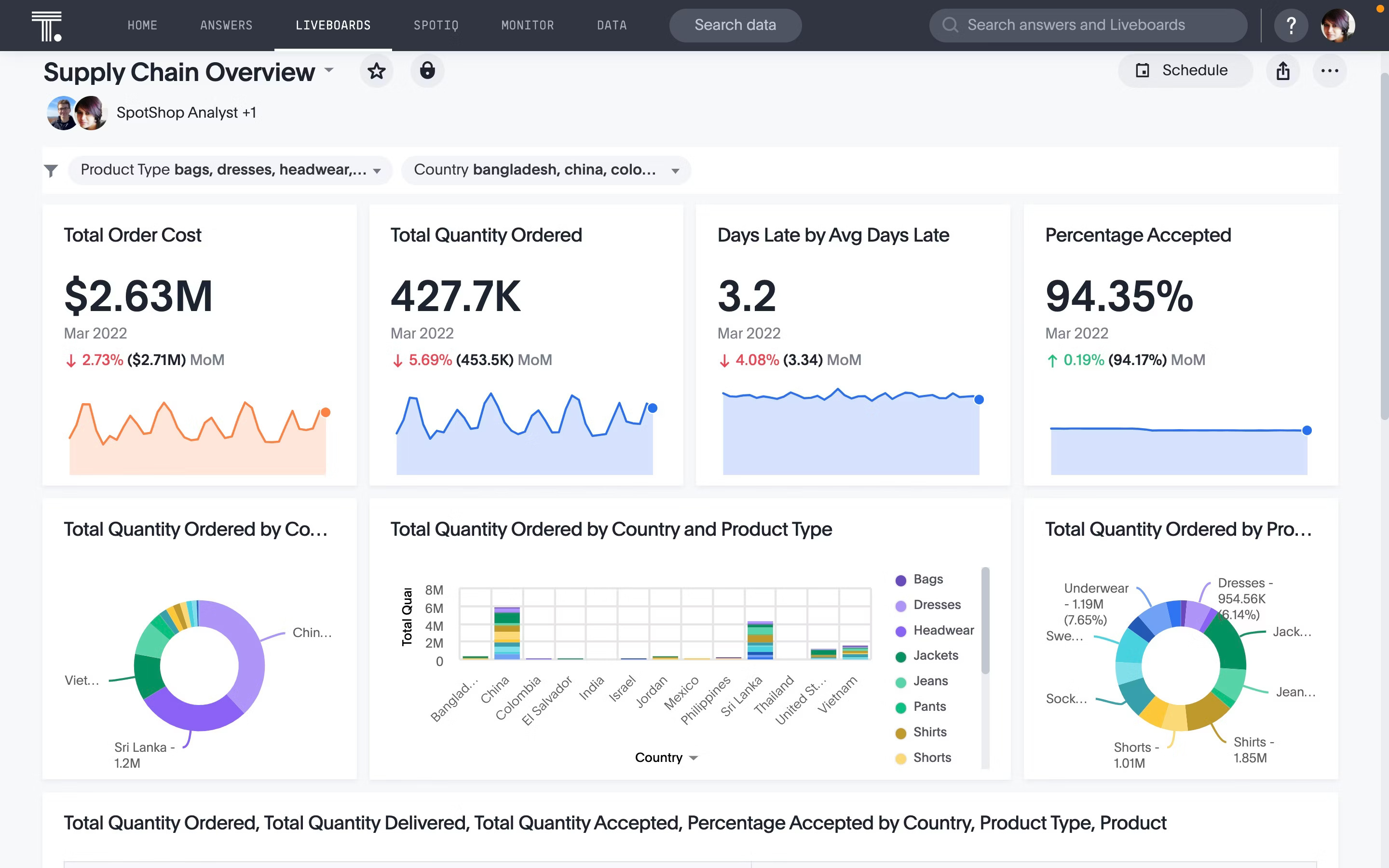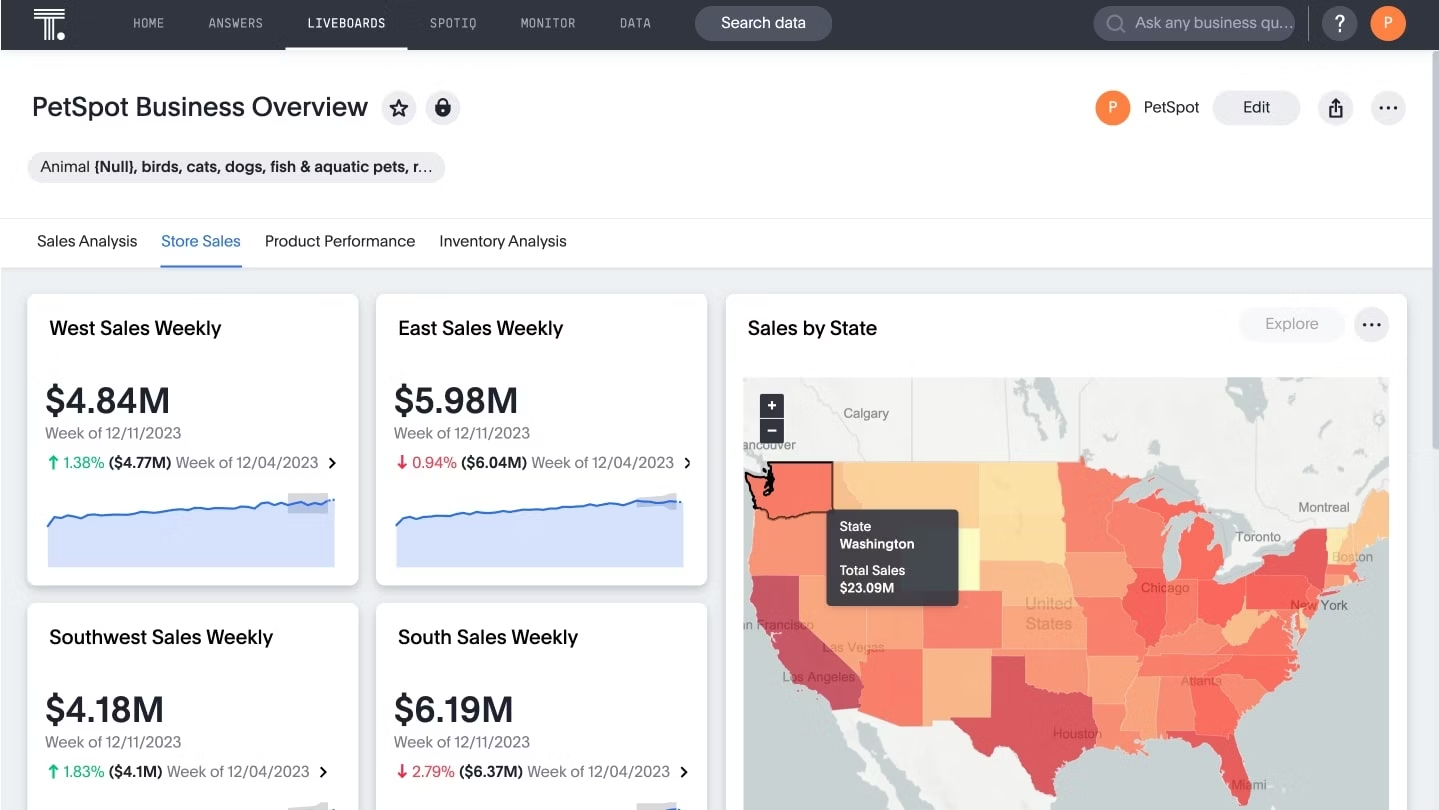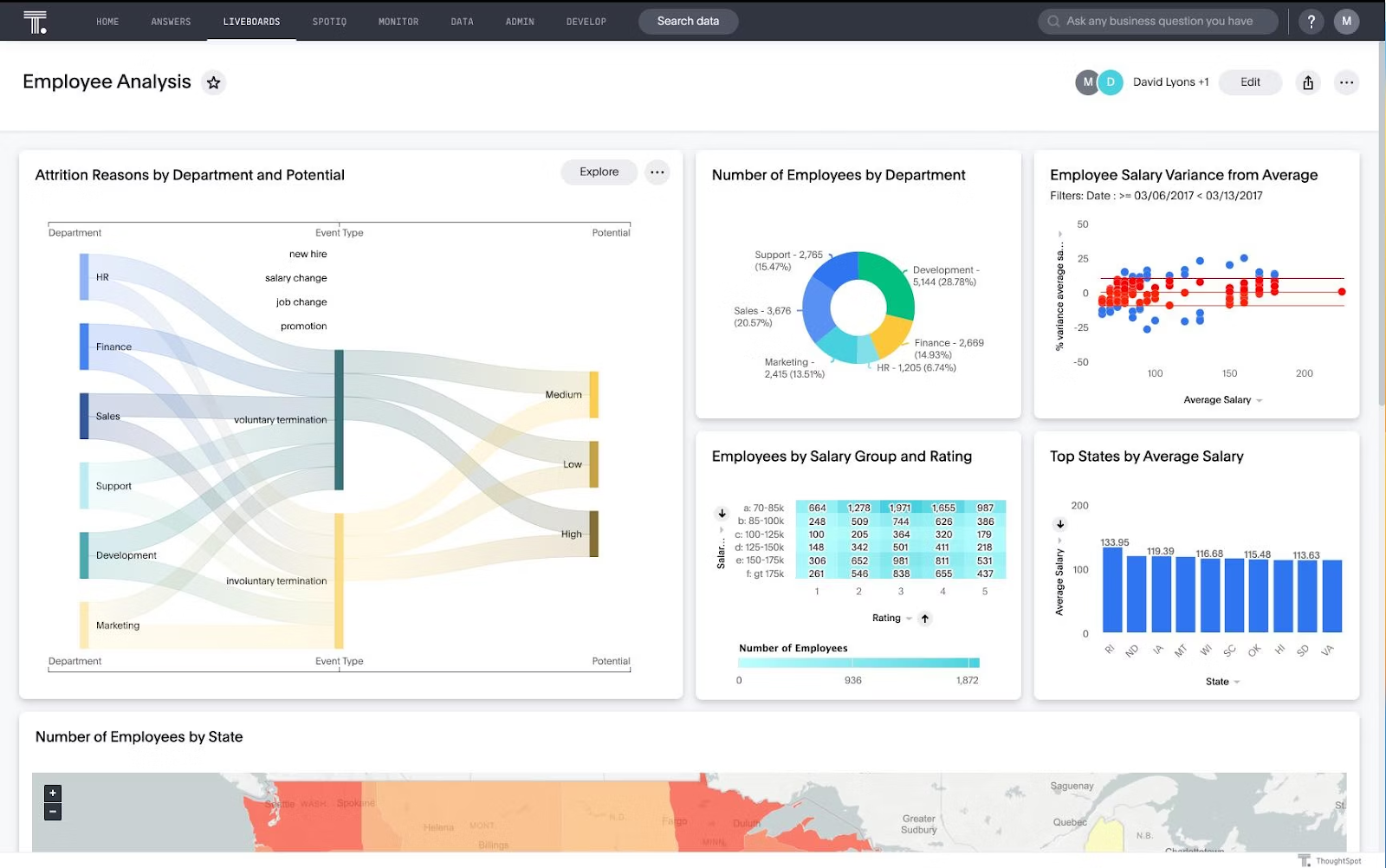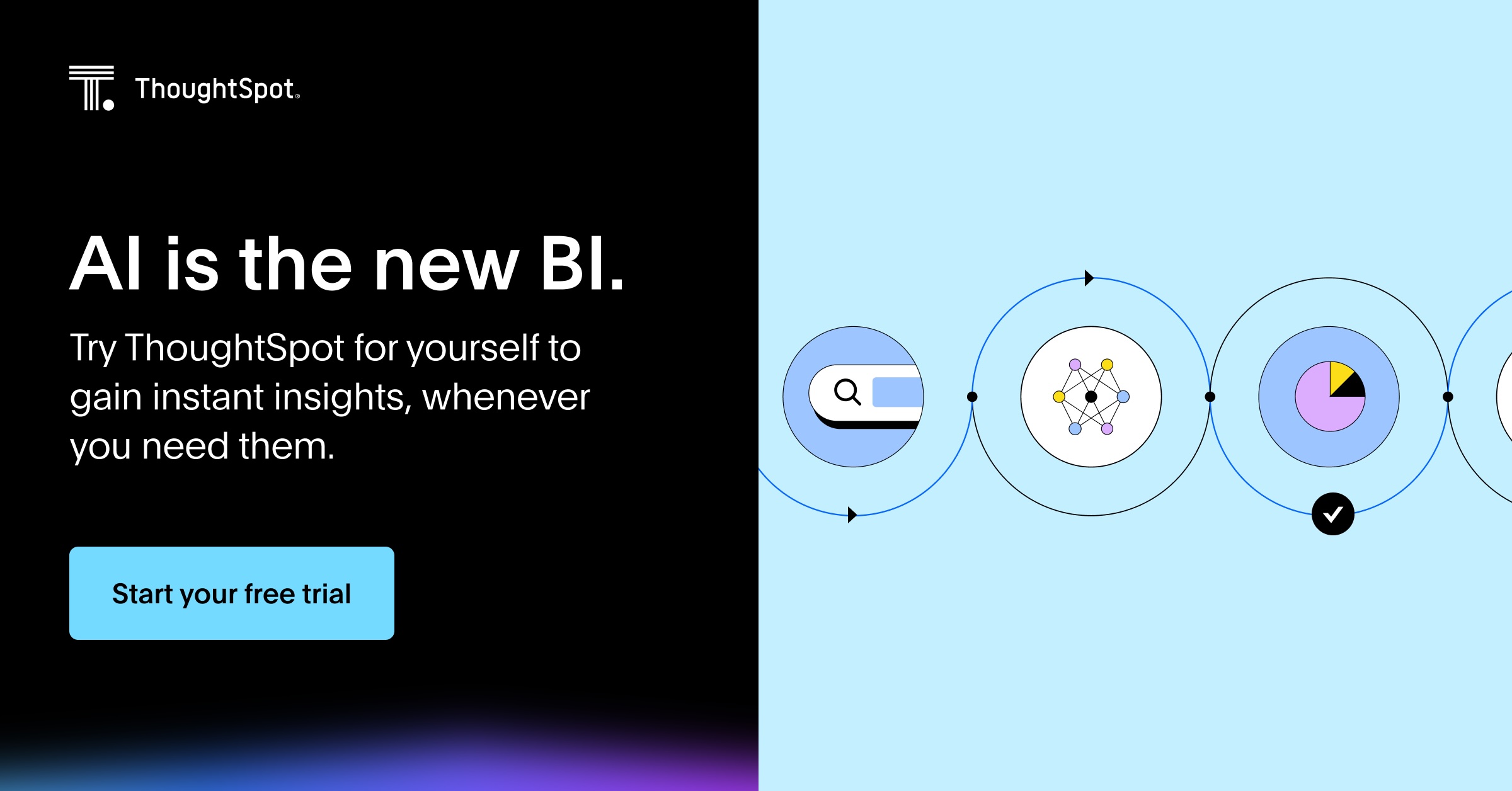The modern business landscape is more competitive than ever before. From new technology to new business models, disruption - and opportunity it brings - is the norm. Savvy organizations know they have to leverage every advantage they can find in order to stay ahead of the competition. The most competitive asset they can bring to bear is data.
However, with the growing sea of data, skyrocketing in a world dominated by the modern data stack, this introduces a new challenge: turning data into meaningful insights that can drive business outcomes. That's where business intelligence comes into play.
Business intelligence solutions offer powerful tools that can help you analyze customer data and drive better decisions – but how should you choose the best one for your unique needs? In this post, we’ll explore the key features to consider when selecting a business intelligence solution, take an in-depth look at real-world use cases for BI, and walk you through how to successfully implement a BI Solution in your company.
Table of contents:
Business intelligence (BI) solutions refer to the tools, technologies, and processes that help organizations collect, analyze, present, and act on data-driven insights to facilitate informed decision-making. These solutions encompass a wide range of software applications, methodologies, and practices that enable businesses to transform raw data into meaningful insights. Business intelligence solutions involve analyzing data from various sources, unearthing insights, and then presenting those insights as reports, charts, and data visualizations. The ultimate goal of a BI solution is to inform decisions and drive action based on facts, not hunches, opinions, or gut instinct.
At its core, a business intelligence solution enables businesses to organize, understand, and take action on data from different systems, databases, and applications. Modern BI solutions are especially useful because they can connect directly to a cloud data platform, and in doing so, create a unified view of the organization's information. With proper data modeling, the right BI solution makes it easy to identify relationships, patterns, and trends buried in data that help organizations understand their operations, customers, and market dynamics.
Selecting the right business intelligence (BI) solution is crucial for organizations aiming to harness the power of data-driven decision-making. With numerous options available in the market from classic desktop data visualization tools for hardcore data analysts to more modern self-service business intelligence tools built for data and business users, it's essential to consider the key features that can make a BI solution truly effective for your organization. Here are six important features to look for when evaluating a business intelligence solution:
1. Search-driven analytics
BI solutions are the most valuable when they can be used by the widest segment of users in an organization; after all, data is part of everyone’s job today. A robust search-driven analytics feature allows all users, regardless of their technical level of expertise, to explore data and retrieve insights through a conversational search interface. It should provide an intuitive and user-friendly experience, enabling users to ask questions in natural language and receive instant and accurate answers. The inclusion of natural language processing (NLP) capabilities, powered by LLMs and advances in transformer architecture, ensures that the solution can understand and interpret user queries effectively.
2. AI-powered insights
Search will help you answer the questions you know to ask, but what about all those insights that would otherwise go unnoticed? AI-powered insights enhance the decision-making process by automating data analysis and providing intelligent suggestions and recommendations. A great BI solution should have the ability to analyze large datasets, identify patterns, and generate actionable insights autonomously, without the user even asking.
A great example of this is ThoughtSpot’s Spotter. With Spotter, as your AI Analyst, you can simply ask questions in natural language and gain instant insights and visualizations from your data. You are free to engage with your data, ask follow-up questions, drill into insights, and explore relevant areas of analysis to ensure you unlock deeper insights, within minutes.
3. Interactive data visualization
Finding an insight and turning it into a chart or graph is table stakes in the modern BI market. Interactive data visualization is vital to go beyond simply communicating insights effectively. The best BI solutions offer an interactive and intuitive interface that allows users to create rich visualizations and charts, then endlessly drill into these visualizations as new questions inevitably arise. These visualizations should be easy to share in other productivity tools like Teams and Slack, or brought presentation tools like Slides, ensuring data-driven insights are available when and where decisions are made.
4. Scalable and fast performance
A high-performing BI solution is essential to handle large volumes of data and deliver insights in a timely manner. Look for a solution that was purpose built to handle massive data volumes, without requiring you to cube, aggregate, or summarize data to remain performant. Distributed cluster architecture allows for parallel processing and scalability, ensuring that the solution can handle growing data volumes and user demands. Real-time data reporting capabilities enable users to access up-to-date information for immediate decision-making.
5. Data governance and security
Data governance and security are critical considerations when selecting a BI solution. The solution should provide robust security features such as role-based access control, which ensures that data is accessible only to authorized users. It should also adhere to data privacy regulations and compliance standards, protecting sensitive information. Audit trails and data lineage features enable organizations to track and understand how data is accessed and used, promoting transparency and accountability.
6. Integration with existing systems
A BI solution should seamlessly integrate with existing systems and data sources to provide a comprehensive view of the organization's data. Look for a solution that offers connectivity to various data sources, including databases, cloud data platforms, and third-party applications. APIs and integration frameworks enable smooth data flow and allow for the creation of data pipelines and ETL/ELT processes, ensuring that data is accurately captured and transformed for analysis.
7. KPI and business monitoring
While data can help nearly every role in every organization, rarely does every employee want to log in to a BI tool each and every time they want to make a decision. With KPI and business monitoring, BI solutions can automatically detect trends and then push them directly to a user. Ideally these are mobile optimized and include an AI-generated narrative to explain the change, helping employees stay on top of their business in real-time as it changes. The most valuable take this further, allowing users to take action on the insight from the same device, empowering on the go employees to course correct, minimize rise, or capture opportunity as it arises, wherever they are.
💡Want a detailed analysis of the top BI tools? Check out this guide for a side-by-side comparison!
1. ThoughtSpot
While we might sound a bit biased, the numbers speak for themselves—ThoughtSpot is the top choice for businesses seeking actionable intelligence. Recognized as a leader in the 2024 Gartner® Magic Quadrant™ for Analytics and BI, coupled with a growing list of world-class customers, ThoughtSpot empowers everyone to interact with data on their own terms.
ThoughtSpot’s AI-Powered Analytics is designed to deliver an experience that allows everyone—from your marketing team to customer support—to ask business questions in natural language and gain answers in seconds. You and your team are empowered to build your own Liveboards, explore data in-depth with drill-anywhere visualizations, and ask follow-up questions—all without needing to rely on the data team.
Core features
GenAI-powered self-service analytics
Spotter, your AI Analyst, puts LLMs to work on business data so you can simply ask a question in natural language (like “What were our sales last month?”) and uncover immediate insights. In addition to surfacing relevant search results, you can dig deeper into any AI-generated answer till your curiosity is satisfied.
2. Interactive Liveboards
Unlike static dashboards with outdated insights, Liveboards offers a real-time, visual experience that helps you keep a pulse on important metrics—even on the go.. Whether it is tracking campaign performance or creating an engaging data story for stakeholders, you can leverage Liveboards to always stay on top of your cloud data.
3. Augmented analytics
ThoughtSpot generates automated insights and predicts outcomes, such as forecasting sales trends or highlighting anomalies in your data that may indicate problems or opportunities. Using machine learning and AI, ThoughtSpot uncovers meaningful drivers behind KPI changes in seconds, empowering you with insights to inform your decisions.
4. Embedded analytics
You can also embed ThoughtSpot into your existing applications and build tailored analytical experiences for your users. With ThoughtSpot Embedded’s low-code, developer-friendly interface, you can customize everything from colors and brand elements to individual charts, KPIs, and visualizations.
2. Power BI
Power BI is Microsoft’s business intelligence solution that allows organizations to connect to and visualize their data. It integrates with other Microsoft products, such as Excel, Azure, and Access. Power BI key features include data modeling, customizable dashboards, and reporting capabilities, enabling users to analyze and share insights.
Core features
Code-free interface: Offers a drag-and-drop interface, making it easy for business users to build dashboards and reports.
Advanced analytics features: Allows data experts to build data models, forecast outcomes, or run advanced statistical analyses.
AI-assisted insights: Generates AI-assisted insights that help users identify trends, patterns, and anomalies.
Data integration: Combines data from various systems and cloud data sources for comprehensive analysis and reporting.
Real-time monitoring: Access to real-time data allows users to stay on top of important KPIs.
3. Domo
Domo is a cloud-based business intelligence solution that helps organizations visualize, analyze, and share data in real-time. It provides a range of tools for data integration, reporting, and visualization, allowing users to connect to a wide variety of data sources and create customizable dashboards.
Core features
Data integration: Connects to a variety of data sources, including cloud-based platforms, databases, and third-party systems.
Custom dashboards: Allows users to create interactive, real-time dashboards using a low-code interface.
Data transformation: Offers tools for cleaning, blending, and transforming data.
AI features: Uses machine learning and AI to automate insights, detect patterns, and make predictions based on historical data.
💡Get the full list of the best business intelligence software here
With data reshaping every role in every industry, business intelligence (BI) solutions offer a wide range of applications across various industries and departments. Here are eight real-life use cases where BI can drive significant value and empower organizations to make data-driven decisions:
Use Case 1: Sales and revenue analysis
Business intelligence can optimize sales performance by providing in-depth analysis of sales data. It helps identify patterns and trends in customer behavior, enabling organizations to make data-driven decisions to boost sales and revenue.
With a modern BI solution like ThoughtSpot, sales leaders can leverage AI-powered features like SpotIQ to identify top-performing products, drive effective sales forecasting, and uncover potential revenue growth opportunities.
See in action how SpotIQ utilizes AI and machine learning to help you perform a one-click analysis to uncover driving factors behind sales key metrics:
Use Case 2: Customer behavior analysis
Understanding customer preferences and behavior is crucial for every business, and why customer churn analysis is one of the most trends in analytics, both this year and beyond. Business intelligence enables organizations to analyze customer analytics data and use those insights to personalize marketing strategies, improve customer satisfaction, and drive customer engagement and loyalty.
For instance, consider a retail analytics Liveboard. By analyzing customer purchase patterns, you can categorize buyers into segments like new buyers, repeat buyers, and loyal customers. With these insights, you can create exclusive offers for each customer segment—such as welcome discounts for new buyers and loyalty rewards for repeat customers—ensuring their experience is a positive one.
Use Case 3: Supply chain optimization
BI solutions contribute to efficient supply chain management by helping with inventory optimization, improving demand forecasting, and streamlining supplier relationships. By analyzing supply chain data, organizations can identify bottlenecks, reduce stockout costs, and ensure timely delivery of products or services.
For example: Let’s say you want to reduce your supply chain costs for a particular raw material. Leveraging a supply chain Liveboard will help you analyze your order costs and determine the ideal order quantities to save storage costs. This way, you can also avoid overstocking while still benefiting from economies of scale.

Use Case 4: Financial planning and forecasting
Business intelligence facilitates budgeting, expense analysis, and financial risk assessment. By consolidating financial data from various sources and analyzing this in a BI solution, organizations can create accurate financial reports, analyze spending patterns, and identify cost-saving opportunities. Financial business intelligence solutions provide insights into profitability, cash flow, and financial forecasting, enabling effective financial planning.
With ThoughtSpot’s natural language search, you can easily spin up real-time visualizations that help you understand your financial data. With instant insights, you can make informed decisions that translate to tangible business value:
Use Case 5: Marketing campaign performance tracking
Business intelligence aids in measuring the effectiveness of marketing campaigns by tracking key performance indicators (KPIs) and analyzing campaign ROI, making it a core part of an effective marketing analytics program. It enables organizations to segment and target specific customer groups, optimize marketing strategies, and allocate resources effectively to maximize returns on marketing investments.
By consolidating data coming in from all marketing channels into a single platform, ThoughtSpot empowers marketers to interact with data in their own way. With SpotIQ, marketers can swiftly identify important drivers that affect conversion rates. Such instant, real-time insights into important marketing KPIs can help you make agile, data-driven decisions that drive better outcomes.
Use Case 6: Operational efficiency and process improvement
Business intelligence helps identify bottlenecks, streamline operations, and improve overall efficiency. By analyzing operational reporting data, organizations can optimize processes, eliminate redundancies, and automate repetitive tasks. BI solutions provide insights into operational metrics, productivity levels, and resource utilization, enabling informed decision-making for process improvement.
Use Case 7: Executive dashboards and decision making
Business intelligence empowers executives with real-time data visualization and insights through interactive dashboards. This enables them to monitor key performance metrics, track business objectives, and make informed decisions. Executive dashboards provide a comprehensive view of the organization's performance, highlighting areas of success and areas that require attention.
Take this executive Liveboard, for instance. A CEO of an e-commerce company could use this liveboard to gain valuable insights into their company’s sales performance. Analyzing this sales data allows them to pinpoint painpoints, optimize sales strategies, and identify high-performing tactics, ultimately boosting the company’s profitability.

Use Case 8: HR analytics and workforce planning
Business intelligence supports HR departments in talent acquisition, retention, and workforce productivity analysis. By analyzing HR metrics, organizations can identify recruitment trends, assess employee performance, and develop strategies for talent retention. Modern HR analytics solutions like ThoughtSpot provide instant insights into employee engagement, training needs, and workforce demographics, enabling effective workforce planning.

Implementing a business intelligence (BI) solution can be a game-changer for organizations, enabling them to unlock the power of data and make informed decisions. However, successful implementation requires careful planning, strategic execution, and user adoption. Here are key steps to ensure a successful rollout of a business intelligence solution:
1. Planning and strategy for a successful rollout
Before implementing a business intelligence solution, it is crucial to define clear goals and objectives. Identify the specific business challenges you aim to address and the desired outcomes in partnership with business users to ensure you’re solving real business challenges from the outset. Develop a comprehensive implementation plan, including timelines, resource allocation, and key stakeholders. Engage business users, IT teams, and executive sponsors to align the implementation strategy with organizational goals.
2. Data integration, cleansing, and preparation
A successful business intelligence solution benefits tremendously from data reliability and accuracy of data. Start by identifying the data sources that need to be integrated, such as databases, spreadsheets, or third-party applications. Ensure data quality by cleansing and validating the data. This involves some common data cleaning tasks such as duplicates, resolving inconsistencies, and standardizing formats. Here, too, bringing in business stakeholders early is beneficial. Instead of waiting for perfect, pristine data, which is an ever elusive outcome, always focus on getting the data usable and useful for the business.
3. Building user-friendly visualizations and reports
The key to user adoption and effective utilization of a business intelligence solution lies in making the solution intuitive to users, whether they want to find their own insights, subscribe to KPIs, or create their own visualizations and reports. Design intuitive and interactive dashboards that provide relevant insights at a glance. Use clear and concise visual elements such as charts, graphs, and tables to present complex information in a digestible format. Tailor the visualizations to specific user roles and their information needs.
4. Training and adoption for maximum utilization
The best BI solution won’t impact your business if it’s not being used. Training and adoption are critical for the success of a business intelligence solution. Provide comprehensive training to end-users, ensuring they understand the capabilities of the solution and how to leverage it effectively. Don’t think of training as a ‘one and done’ exercise, where users are locked in a room for multiple days, and then never engage with the tool again. Instead, offer ongoing support and resources to address user questions and concerns through micro learning sessions. Foster a culture of data-driven decision making to promote user adoption and maximize utilization.
5. Continuous improvement and iteration
Implementing a business intelligence solution is an iterative process. Regularly assess the performance and effectiveness of the solution against the defined goals and objectives. Gather both qualitative feedback and quantitative usage data from users and stakeholders to identify areas for improvement. Continuously refine and enhance the solution based on user requirements, emerging technologies, and changing business needs. Embrace a mindset of continuous improvement to ensure the business intelligence solution remains aligned with evolving organizational requirements by taking advantage of industry resources like the best data analytics podcasts or attending a few of the best data analytics conferences.
Choosing the right business intelligence solution for your organization can be overwhelming, but with the right guidance and knowledge of what to look for, it can be a relatively straightforward process. Having a clear understanding of the features offered, insight into relevant use cases, and a successful implementation strategy makes selecting the best option much easier.
Once you have a good idea of which business intelligence solution is best for you and your team, don’t hesitate to take the next step – start exploring it firsthand. For an intuitive AI-driven BI solution that will provide all the necessary insights into your data without any hidden costs or complicated licensing models, consider signing up for a ThoughtSpot free trial today.









